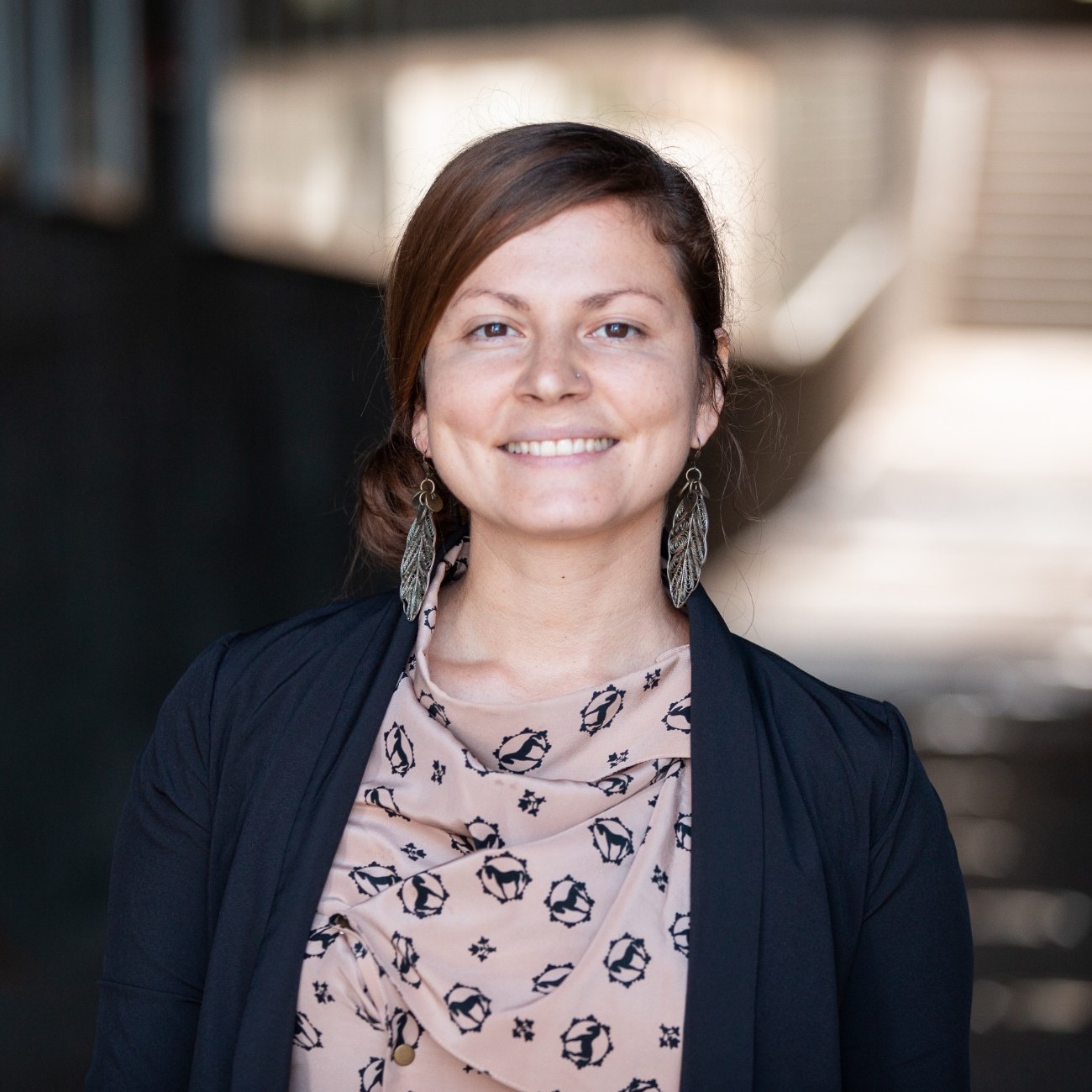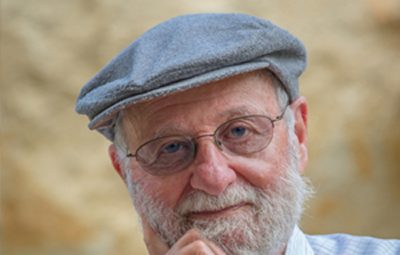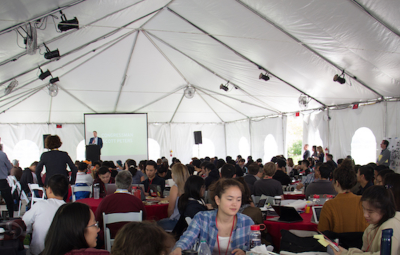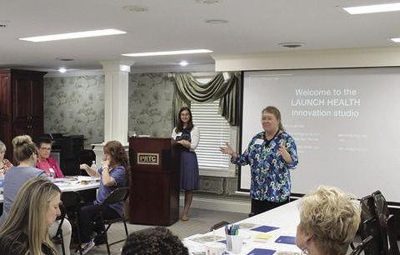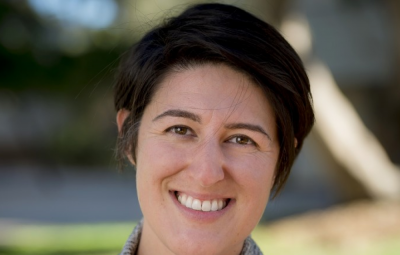To be honest I was not very technically savvy in my early days or a really a tech geek. Technology often frustrated me to the point of feeling stupid. But then, during my early design studies, I read a book called “The Masochist’s Coffeemaker” (The Italian title for Don Norman’s Book “The Design of Everyday Things”). Thanks to that book I finally understood that it wasn’t my fault for not being able to easily operate my technology, but often a lack of human centered design. From then on everything changed, and I chose to become an Interaction Designer.
Design Lab Welcomes Emilia Pucci as a Designer in Residence
Emilia Pucci has been selected as a Designer in Residence for Design Lab. She brings with her a wealth of knowledge as an interaction, UX and wearable technology designer with an MSc from TU Delft. She has served as the Head of Research and Interaction Design for international consultancy, Round Feather. She also has worked extensively in the global “maker” community through her work with various Fab Labs in the Fab Lab network (an offshoot of MIT’s Center for Bits and Atoms). Most recently she took a sabbatical to spend six months in Mexico as part of the first Fabricademy, an MIT/Fab Lab initiated course that seeks to tie together craftsmanship with wearable technology.
What excites me about Emilia joining the lab as a Designer in Residence is how she can help reconnect people with the tactile and tangible. She has a great ability to take theory and intellectual practice and merge it with something physical and real. She also has extensive business experience that allows her to apply her skills and work in an impactful way. Her journey so far has been inspiring and we’re excited to see what she does as part of the Design Lab.
– Michèle Morris, Associate Director, UC San Diego Design Lab
Merging Theory & Intellectual Practice with Craftsmanship
Pucci’s fascination has always been in the realm of how craftsmanship interacts with intellectualism. She grew up in Florence, Italy. Her worldview shaped by the tension and tug of war between the heavy artisan upbringing of her Italian father and the intellectual curiosity of her American mother. As Pucci describes it, “I like to think from a young age I learned the difference between family who carried knowledge in their hands, and those that carried it in their head.” She began to explore the world of design through her work at the Universita degli Studi di Firenze in Florence. While she began her explorations through exhibition, industrial and product design, it was not until working on her MSc in Design for Interaction at TU Delft that she truly found her calling.
The Delft approach to design completely revolutionized my mindset and my ability to think-and-do design. The most relevant learnings that I gained through that experience were: 1. Design is an iterative process – research and making are tightly intertwined; 2. Design is a social practice – people prototype the product and service interactions by testing them in a social ecosystem; 3. Design is a way of thinking – we change the world well beyond just making chairs, constructing clothes or producing screen swipes.
International Consultancy Work
After graduating from TU Delft, one of the top design schools in the world, she was recruited to work for international consultancy Round Feather, where eventually she served as Head of Research & Interaction Design.
I joined Round Feather as an Interaction Designer, Researcher, and founding team member, and came to San Diego to build the research and design practice, helping Fortune 500 companies improve the user experiences of their products and services using an emotion-centered approach to strategy, branding and design.
 Electric Embroidery, a workshop held with a community of artisans (Cooperative Flor de Margarita) from Yucatan, Mexico, where they learned how to embroider electronic circuits with switches, LEDs and Batteries on their embroideries
Electric Embroidery, a workshop held with a community of artisans (Cooperative Flor de Margarita) from Yucatan, Mexico, where they learned how to embroider electronic circuits with switches, LEDs and Batteries on their embroideries
MIT & Fab Lab
After several years with Round Feather, her desire to reconnect with communities of practice and more embodied interaction design led her to take a sabbatical from work. She wanted to reconnect with the “maker” world that she started cultivating during her time at TU Delft when she did her thesis at the Fab Lab in Rotterdam.
I took a sabbatical to travel to Peru and learn Peruvian textile craft. Following that I was selected to join the inaugural Fabricademy at Yucatan, Mexico, a program originated from the MIT/Fab Lab network, a first of its kind program at the intersection between textiles, digital fabrication and biology.
What is the MIT/Fab Lab Network?
Emilia joined the Fab Lab movement early in its evolution when there were only a dozen in the world. San Diego, through local innovator Katie Rast, also hosted one of the first Fab Labs in the world. As of 2018 there are over 1200 Fab Labs across the world and on every continent except Antarctica.
Neil Gerschenfeld of MIT’s Center for Bits and Atoms is credited with starting the Fab Lab movement as well as inspiring and evolving the “maker” movement. While the launch of Make: magazine in 2005 pushed the “maker” movement into the mainstream, many credit MIT and the Fab Lab network with evolving it into a physical reality. A physical reality which has put makerspaces in virtually every university and community. You can watch Gerschenfeld’s seminal 2007 TED Talk on Fab Labs and Makerspaces below:
The idea for a Makerspace/Fab Lab came when he noticed MIT students from multiple departments and disciplines were interested in learning how to use different tools (3D Printers, CNC Cutters, Laser Cutters). Out of this he created a class called, “How to Make Almost Anything.”
A third digital revolution is now underway that is extending this insight into fabrication, by discretizing not just the description of a design but also the materials that it is made from, in the same way that living systems are assembled from a small set of amino acids.
– Neil Gershenfeld, MIT
 Interactive canvas created by Emilia Pucci at ATLAS Institute, CU Boulder, with PhD Laura Devendorf. The canvas is made with thermo-chromic ink dyed weaved wool and conductive thread, that creates a dynamic, slow-motion display through heat.
Interactive canvas created by Emilia Pucci at ATLAS Institute, CU Boulder, with PhD Laura Devendorf. The canvas is made with thermo-chromic ink dyed weaved wool and conductive thread, that creates a dynamic, slow-motion display through heat.
Since then, the movement has grown exponentially and evolved in many directions. For example two years ago, George Church, a Professor at Harvard and MIT, adapted Gerschenfeld’s “How to Make Almost Anything” program and started a program called “How to Grow Almost Anything.” Additional initiatives that seek to tie the various strands of academic pursuit, community engagement and design are being led by the Fab Academy, an off-shoot of the Fab Lab network. Fabricademy, of which Pucci was a part, is one of it’s latest offerings. As Pucci says, “Fab Labs and their approach to the world have been an integral part of how I view the world.”
We are missing so much potential in our real worlds by not tying together the digital elements into our real world. But I realized without an intimate knowledge of textiles and materials, that “knowledge of the hands”, the ability to integrate them digitally is limited. Fabricademy is at the cutting edge of reconnecting those disconnected strands.
 Two smart garments created during Fabricademy, the Fablab MIT course on Textiles, Technology and Biology, held for the first time from October 2017 to March 2018. The garment on the right is Internet of Hearts, a top that allows the wearer to soothe their stress through key acupressure points. The second garment is the outcome of Electric Embroidery, LED earrings and a dress with a belt that creates a dynamic LED pattern according to the acceleration of the wearer.
Two smart garments created during Fabricademy, the Fablab MIT course on Textiles, Technology and Biology, held for the first time from October 2017 to March 2018. The garment on the right is Internet of Hearts, a top that allows the wearer to soothe their stress through key acupressure points. The second garment is the outcome of Electric Embroidery, LED earrings and a dress with a belt that creates a dynamic LED pattern according to the acceleration of the wearer.
What does she hope to bring to Design Lab?
As Pucci says, “For years I’ve been inspired by the work that Don has done, and am excited to see how Design Lab is taking his vision to humanize technology and create a human-centered approach to design. I also had the privilege of taking Scott Klemmer’s Coursera Interaction Design course several years ago and find his approach of applying user research to design and the software fascinating and effective. But, even beyond academics what really draws me to Design Lab is the fact they are trying to shape an entire design culture in Southern California. Their approach to combining community and academics is truly unique.”
My main goal as I shape my design practice into an embodied practice combining craftsmanship & technology is to build the new interfaces of tomorrow. I’m eager to work together with students and faculty at Design Lab to both learn from their practices and in whatever way I can plant the seeds of wearable embodied design and hands-on, “maker” approaches.

